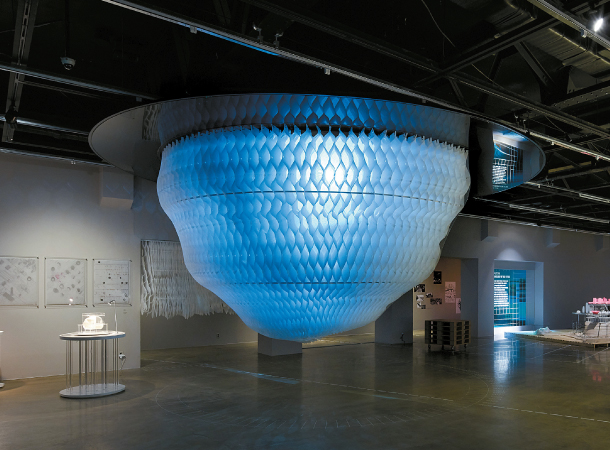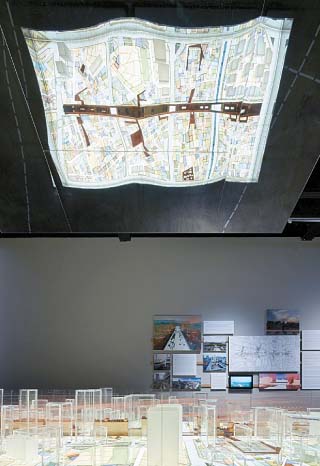How 1960s architecture affects Korea today

“Dream Cells” by art duo BARE (Jeon Jin-hong and Choi Yun-hee), which depicts the crowded ‘beehive’ housing granted to Seoul residents. [KIM KYOUNG-TAE]
The exhibition explored the complex relationship between architecture and the state in the 1960s, a paradoxical period when an oppressive developmental state under Park Chung Hee provided the only platform for architects to express creative freedom.
Artists participating in “Spectres of the State Avant-garde” focused particularly on critiquing and imagining new possibilities for projects and unrealized ideals of the state design firm Korea Engineering Consultants Corporation (KECC) in the ’60s. The KECC was responsible for constructing major national propaganda-building projects like Jongno District’s ambitious shopping arcade Sewoon Sangga in central Seoul, and the utopian Yeouido Master Plan in western Seoul to prop up lush parks and public spaces, but relevant documents from the period were glaringly absent, like spectres, or ghosts.
The Korean Pavilion had a successful run during its six months in Venice last year, drawing over 150,000 visitors in total.

“The City of Radical Shift” by Kim Sungwoo, an installation reflecting the role of Sewoon Sangga today. [KIM KYOUNG-TAE]
The first floor of “Spectres of the State Avant-garde” sets the tone of the exhibition by offering historical insight into what the 1960s were like.
The Absent Archive offers contextual information of the four KECC projects that are the main subjects of the exhibition’s projects - Sewoon Sangga (1967), the 1st Korea Trade Fair in Guro-dong (1968), Yeouido Master Plan (1969) and the Expo ’70 Korean Pavilion in Osaka, Japan (1970).
The Emergent Archive is an interactive space dedicated to weekly forums to further discussion on the projects and modern architecture.
The “Fantastic City” video exhibit by Seo Hyun-suk reflects on the four KECC projects through interviews with the company’s then-employees. In “Light from Anywhere,” novelist Jung Jidon responds to a photograph of a woman posing confidently in the midst of male architects taken at the Osaka Expo ’70, weaving a fascinating but fictional backstory for the mysterious figure who remains unidentified to this day.
Works on the second floor take a critical look at the actual legacy left by the projects.
Art duo BARE’s dome-shaped “Dream Cells” is a response to the 1st Korea Trade Fair, the first-ever international fair in Korea that employed the Guro Industrial Complex to publicize Korea’s industrial prowess at the sake of migrant factory workers who lived in cramped conditions.
New for the Seoul exhibition, Belgian artist Laurent Pereira contributed a time-travel cartoon “Bamseom: Seeds of Change,” which features a young shaman who goes back in time to stop Bamseom island from getting destroyed by development projects in 1968.
BY KIM EUN-JIN [kim.eunjin1@joongang.co.kr]
“Spectres of the State Avant-garde” runs through May 26. It is open from 11 a.m. to 7 p.m. excluding Mondays. Entry is free. For more information, call 02-760-4626.










with the Korea JoongAng Daily
To write comments, please log in to one of the accounts.
Standards Board Policy (0/250자)